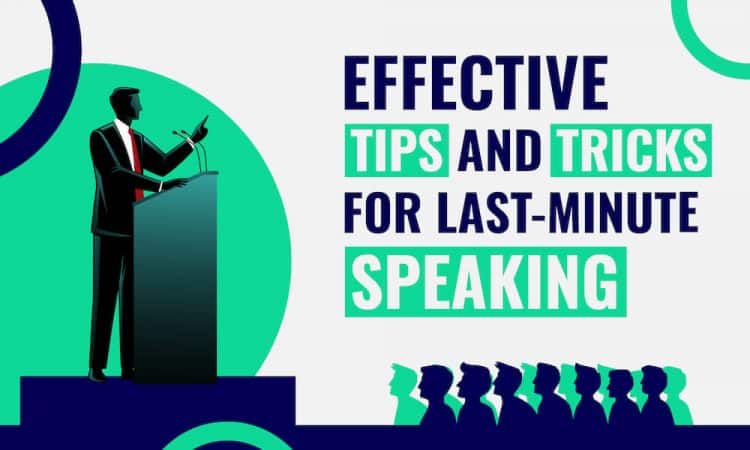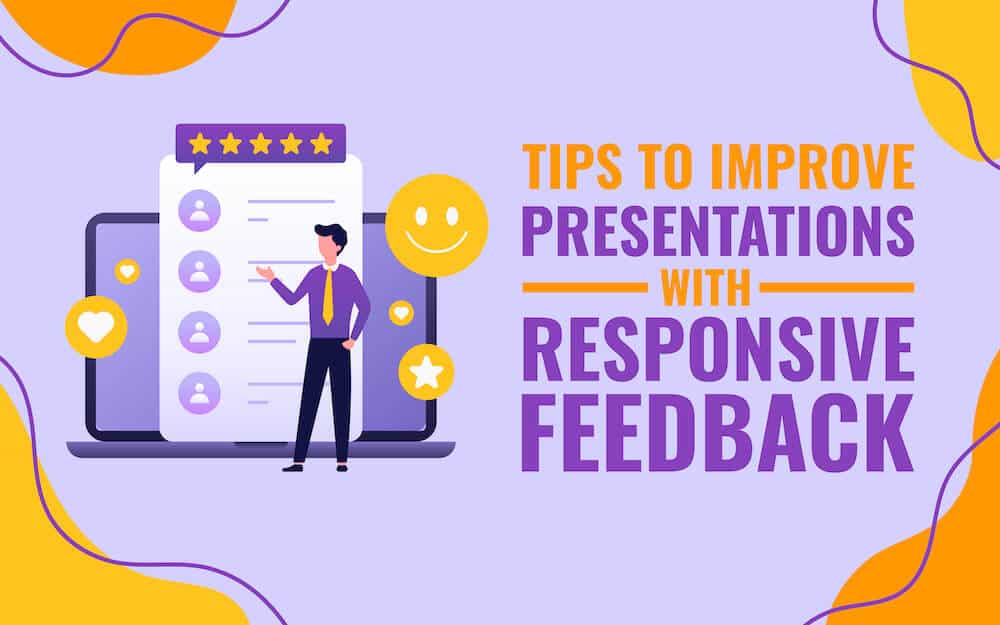
Your boss unexpectedly asks you to deliver a speech during a business enclave. All you’ve got is an hour, and you’re left wondering what is to be done now. The next thing you know is that you’re on the stage with a heart beating faster than ever, hands getting cold, and feet seeming as if they won’t even move an inch.
Well, we’ve all been through this experience once in our professional lives! Being shouldered with the responsibility to deliver a last-minute speech is something we all fear. Be it the nerve-wracking stares from the audience or a palpitating heart, it feels like a nightmare.
Well, not anymore, as here are a few tips you can use to become an excellent last-minute speaker!
1. Create a Storyline: Captivate Them With a Narrative
Remembering a story is much easier than contemplating facts, statistics, and numbers. Therefore, once you know your topic, start preparing a storyline.
One of the best ways to form a story is remembering the last time you spoke or wrote about the topic. Now recall any incident or anecdote around that and how it can benefit or relate to the audience. Add examples, use simple words, and create a narrative to hook your audience and keep them invested throughout the presentation.
2. Craft a Roadmap: An Outline to Your Thoughts
Time is of the essence when you’re a last-minute speaker. Quickly jot down key points you want to cover and organize them logically.
Once you’ve taken that initial moment to collect your thoughts, the next step is to create a concise outline that serves as your roadmap.
Start by identifying the primary message that you want your audience to grasp. Whether it’s the project’s success story or lessons learned from challenges, having a central theme will help guide your impromptu speech.
For instance, if you’re tasked with speaking about a recent marketing campaign, your outline might include important messages such as the campaign objectives, the strategies employed, notable successes, and any unexpected hurdles. By structuring your speech cohesively, you can ensure that your audience is on the same page as you.
A well-organized outline helps you stay on track and enables you to present your ideas coherently and engagingly despite the time constraints.
3. Expert-Designed Templates: Harness the Power of Outstanding Visuals
Visual aids can be powerful tools and serve as additional anchors for your audience, reinforcing key points and aiding in information retention. In a spontaneous speaking scenario, where distractions may be more prevalent, a visual can serve as a focal point, keeping your audience engaged.
However, creating a presentation or crafting visuals from scratch would be challenging at the last minute. So, you can save time and focus on your content by using expert-designed templates.
For instance, if you’re discussing the outcomes of a recent project, a visual representation of the project timeline or a graph showcasing performance metrics can add a layer of clarity, making complex information more accessible and fathomable for your audience.
4. Connect and Communicate: Establish an Emotional Connection
Connecting with your audience at a deeper and personal level is a universal principle of effective communication. Take a moment to consider your audience’s specific interests, concerns, or priorities. Whether it’s a spontaneous team meeting or a presentation to colleagues, tailoring your speech to resonate with their needs will significantly enhance engagement.
For example, if your impromptu speech revolves around a recent project’s challenges and successes, highlight aspects that directly impact your audience. If your team values efficiency, emphasize how specific strategies streamline processes. If innovation is a priority, delve into creative solutions that were implemented.
By aligning your message with your audience’s interests, you can humanize your presentation, making it informative and relatable. This personal touch will help your audience connect with you and your message, fostering a sense of camaraderie even in unexpected speaking situations.
5. Involve and Interact: Keep Your Audience Engaged
Audience participation is a crucial ingredient for a successful speech. When faced with a last-minute speaking opportunity, transforming the presentation into a two-way interaction can keep your audience engaged and make the experience more enjoyable for everyone involved.
For example, if your speech revolves around a recent team project, ask questions such as, “Has anyone faced similar challenges in their projects?” or “What strategies have worked for you in overcoming tight deadlines?” It creates a sense of inclusivity and allows your audience to contribute to the conversation, fostering a collaborative atmosphere.
If you need an ice-breaker, consider incorporating subtle humor, putting up poll questions that can be answered with a yes or no, or calling up some audience members on the stage to share their opinions on the topic.
By fostering a dynamic and interactive environment, you can transform your impromptu speech into a shared experience, making it more memorable and impactful.
6. Maintain Your Calm: Embrace Spontaneity
Lastly, acknowledging and normalizing the emotions that come with last-minute speaking is a crucial aspect of effectively handling such situations. Whether you’re a seasoned speaker or a novice, the pressure of delivering a speech with minimal preparation can evoke feelings of anxiety and nervousness. It is essential to remind yourself that these emotions are absolutely normal.
Even experienced speakers can feel the weight of the unexpected, but what sets them apart is their ability to channel that nervous energy into a positive force. Rather than viewing anxiety as a hindrance, consider it as a sign that you care about delivering a meaningful message. Use this energy to fuel your passion and commitment to the topic at hand.
Conclusion
Becoming a successful last-minute speaker is not just about managing stress; it’s about turning the unexpected into an opportunity to shine. You can deliver a compelling speech even with minimal preparation by staying calm, organizing your thoughts, connecting with your audience, and embracing authenticity.
Remember, the key is to tap on your existing knowledge and communicate it in a way that resonates with your audience. With practice, being a last-minute speaker becomes a skill that sets you apart in various professional and personal settings.
We hope these tips help you in your next public speaking endeavor.



